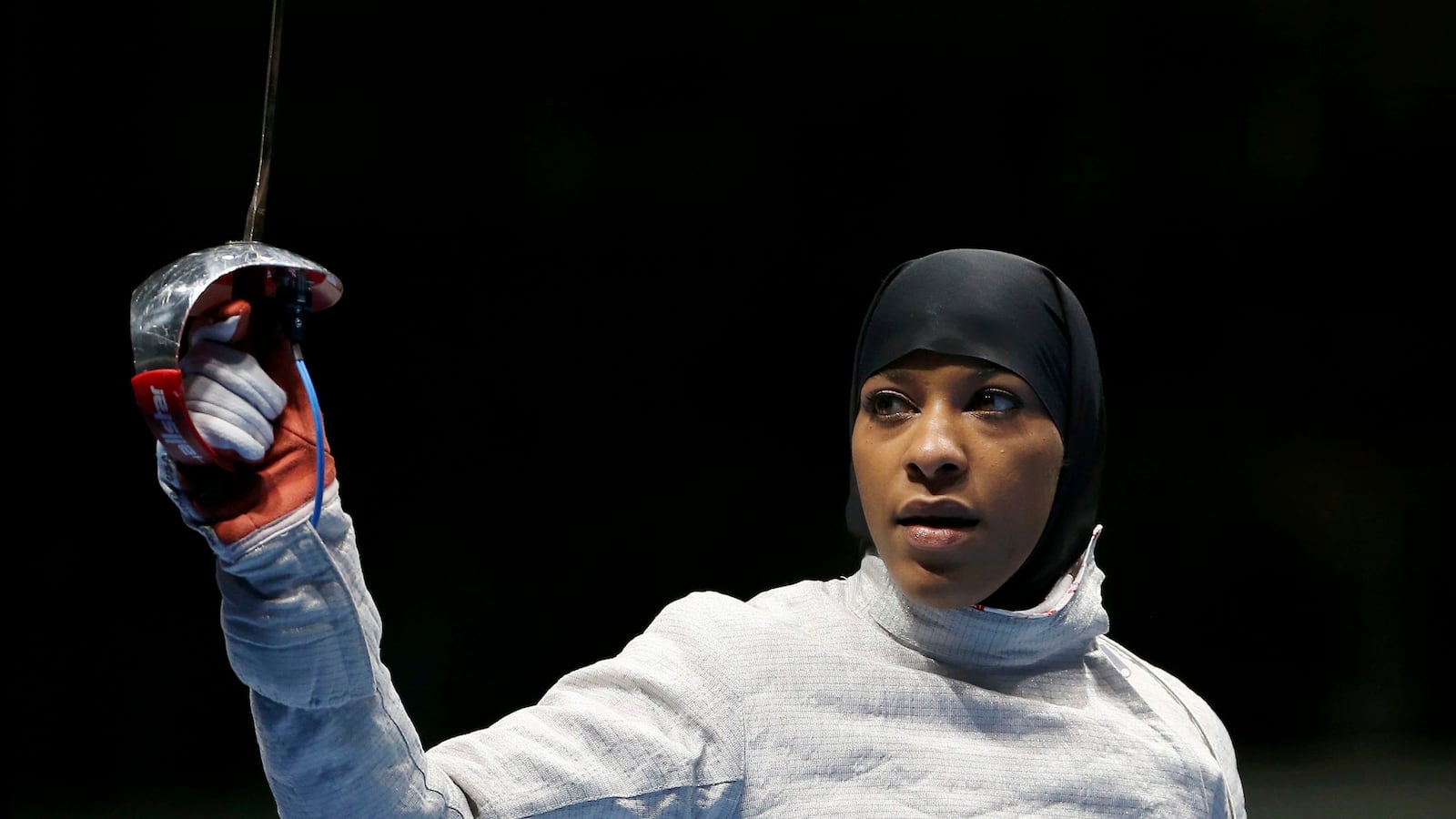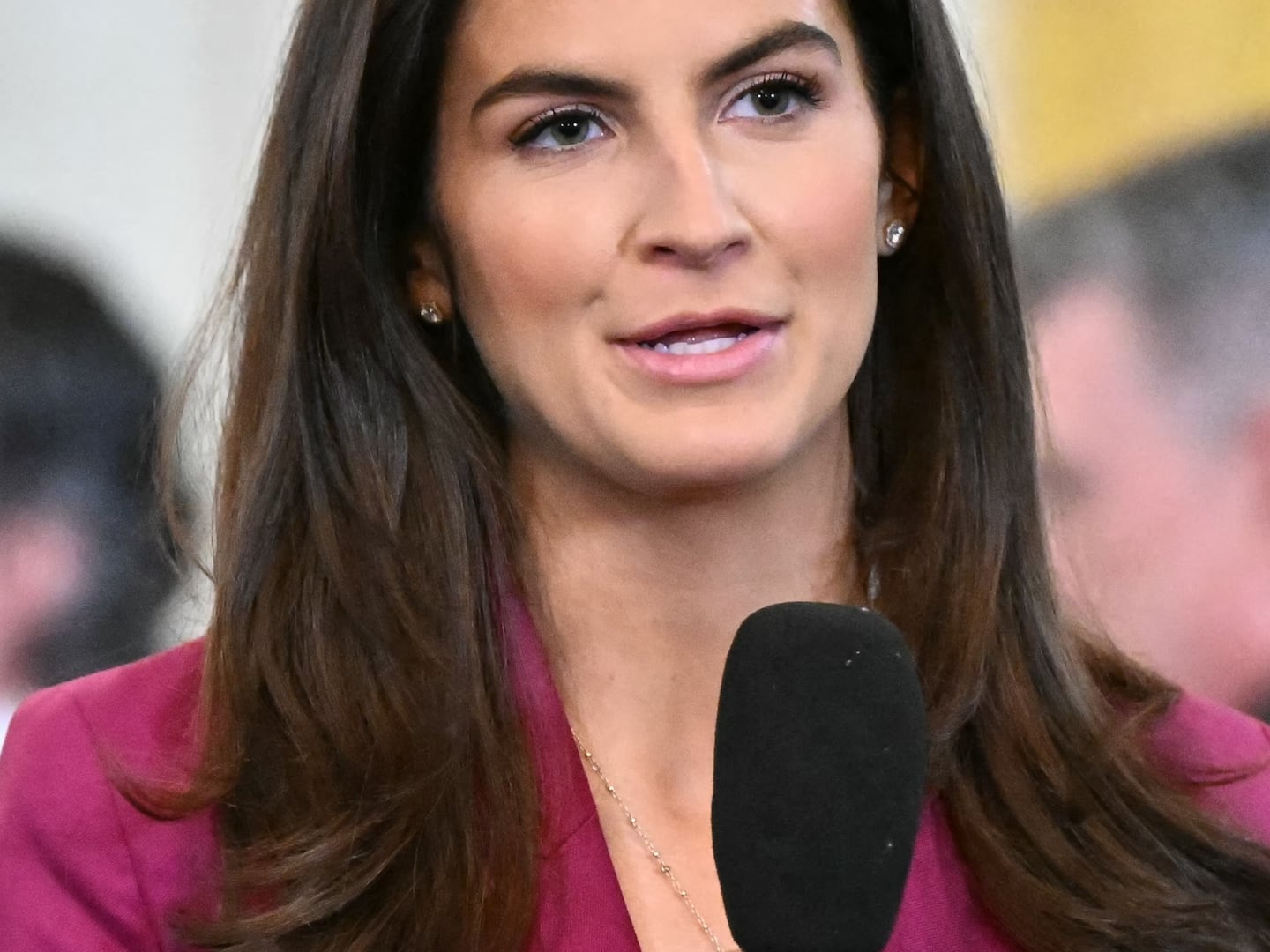For the 2016 Olympic Games in Rio, Team USA presented the first hijab-wearing athlete. Ibtihaj Muhammad is an unapologetic Black Muslim woman and brilliant fencer who speaks candidly about the toxic American political climate while casually attempting to slay in world-class competition.
The media attention around Muhammad is important—but the obsession about her clothing choices is tiresome. Female athletes are often subject to incredulous amounts of misogyny, and in the case of Muhammad, gendered Islamophobia. Discussions from mostly male sportswriters on those issues are often lacking in nuance.
The coverage of Muslim women athletes often emphasizes their traditional roles in an exotic culture, and makes their uniforms and veils into the topic of much fascination and tokenization. According to a 2014 Women’s Media Center report, almost 90 percent of sportswriters are white, straight, able-bodied men. Therein lies much of the problem. When stories on Muhammad emphasize that she is not an oppressed and subservient woman, it just reinforces the unfortunate myth that most Muslim women are meek and oppressed.
A few years ago, I created a BINGO card that could be used while following coverage of Muslim women in sports. I pointed to the usual tropes that were used in articles about Muslim women including: their country of origin, their father’s opinion of sport, and any particular incident of violence against women that was unrelated to the said athlete but mentioned anyway due to similar faith or culture.
It began as somewhat of a joke but quickly turned into something reminiscent of The Onion where it could be used to identify a formula that most sportswriters might adhere to.
I am an identifiable woman of color who focuses on sports. Of course there are more women like me.
There are so many opportunities for (sports) media outlets to reach out to Muslim women to write about... wait for it… Muslim women. It’s appalling how infrequently this happens.
The stories about Muslim athletes are so filled with what I consider “fire over fact” it almost ignores the reality: Muslim women, both veiled and unveiled, have been competing at the highest levels of international sports for a very long time.
Admittedly, the optics of a Black Muslim American woman geared up in Team USA gear are powerful. But the constant conversations about her headscarf and the clothes of other Muslim athletes are not.
When Egypt’s Dooa El-Ghobashy and her teammate Nada Meawad played against Germany in beach volleyball, the internet exploded. There were incessant discussions of whether the chosen uniforms represented a “Clash of Cultures” or an intense “Burka vs Bikini” competition. In fact, the German team wore specialized swimsuits and Egypt wore something from one of the booming modest sportswear lines. These tropes are irresponsible as they not only pit women against women but are reductive.
First and foremost, these women are athletes who have trained for years and are now competing on the world’s most important stage. The constant mentions of their headscarves are not always relevant considering there have been incredible female athletes who have competed in headscarves before Muhammad. All one has to do is Google.
The headlines that scream about the accomplishment of a “Hijabi American” are unhelpful as they reduce an athlete to her outfit. It can be noted that we don’t refer to any other athlete who observes a faith by a religious accessory, be it a necklace or tattoo featuring a cross, the Star of David, or a “Karma” symbol.
More than anything, there is passion, strength, resilience, and possibility and yes, the banality of constant training and dedication.
There are tremendous hurdles Muslim women may face in sport. One of the most important issues nowadays is bans on headscarves that exclude incredible Muslim women athletes from the sports they love.
It is important to recognize that the issue of those who have access to the platform of sportswriting is really as important as the topic itself.
When we see a very selective group of privileged men who create policy around women’s clothing and then a selective group write of it—how much progress is being made?
The policing and fetishizations of women’s bodies often collide, particularly in the world of sport.
Those are topics that ought to be highlighted in mainstream sports media instead of vacuous discussions of whether the chosen uniform of an athlete is appropriate or a novel concept from the lens of the sportswriter. The sooner that men realize that their opinion of what women wear is not required or necessary, the better off we shall be.
Women in hijab are so much more than their headscarves or turbans. We struggle, fall, recover, and thrive like all other people. There might not be any hijab-wearing athletes on the front pages, but it does not mean they do not exist. It simply means that one should broaden their viewpoint.
Finally, as much as sportswriters might want to engage in important discussions about Muslim women in sports, it is worth considering that Muslim women are completely capable of writing about themselves.






